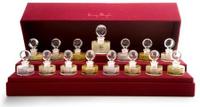5 Books about Dance and Resilience
Dance, like all arts, is about making a connection with others. I was thinking lately about Gelsey Kirkland, a dancer with whom I was fortunate to study when she gave her much beloved classes at Steps in NYC. Kirkland was one of George Balanchine’s star dancers and an American ballerina with a striking style. I will never forget how she told us that when dancing, we should remember that we are holding our beating hearts in our hands. That image solved the problem of dropping the wrist even during the most complicated movements, but it stayed with me even when I changed into street clothes and put my pointe shoes away.

These days I also think about Kirkland’s comment often, whether I dance or write. Making a connection with others is much more difficult in this time of Zoom and social distancing, but being genuine and honest and not being afraid of being vulnerable towards others is still important. My ballet training has influenced my attitude to life and shaped my personality. I admit that not all such influences have been entirely positive–the relentless push for perfection comes with a price, ballet taught me what resilience means. Reading about other dancers and dance has always inspired me, and I would like to share my list of favorite books with you.




















Klaas in Perfume To Brighten Up Your Spring Days: I just discovered Le Jardin de Monsieur Li! Such a lovely, zingy jasmine! I am not much of a floral guy, but this perfume is such a treat! Spring in… April 19, 2024 at 3:36pm